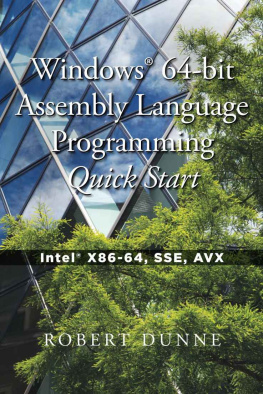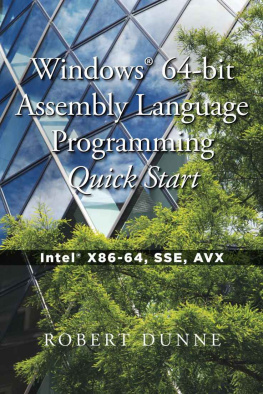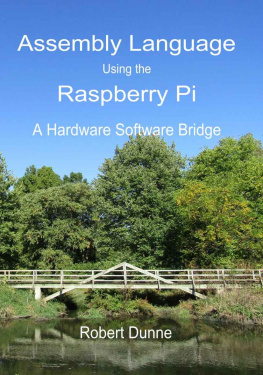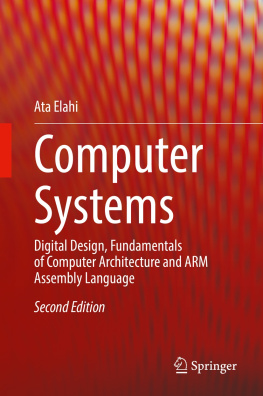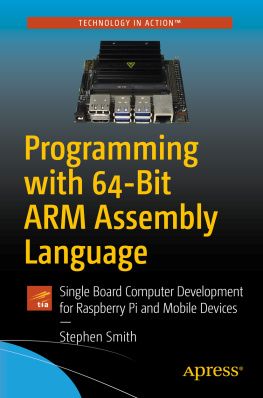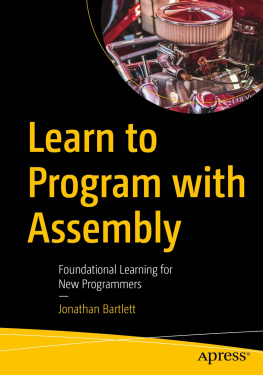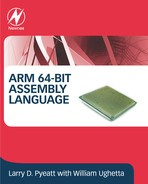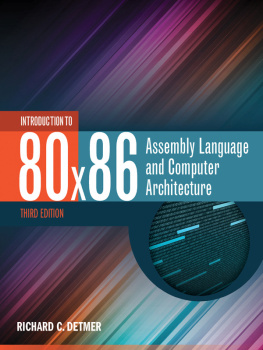Robert Dunne - Assembly Language Coding in Color: ARM and NEON
Here you can read online Robert Dunne - Assembly Language Coding in Color: ARM and NEON full text of the book (entire story) in english for free. Download pdf and epub, get meaning, cover and reviews about this ebook. year: 2017, publisher: Gaul Communications, genre: Computer. Description of the work, (preface) as well as reviews are available. Best literature library LitArk.com created for fans of good reading and offers a wide selection of genres:
Romance novel
Science fiction
Adventure
Detective
Science
History
Home and family
Prose
Art
Politics
Computer
Non-fiction
Religion
Business
Children
Humor
Choose a favorite category and find really read worthwhile books. Enjoy immersion in the world of imagination, feel the emotions of the characters or learn something new for yourself, make an fascinating discovery.

- Book:Assembly Language Coding in Color: ARM and NEON
- Author:
- Publisher:Gaul Communications
- Genre:
- Year:2017
- Rating:4 / 5
- Favourites:Add to favourites
- Your mark:
Assembly Language Coding in Color: ARM and NEON: summary, description and annotation
We offer to read an annotation, description, summary or preface (depends on what the author of the book "Assembly Language Coding in Color: ARM and NEON" wrote himself). If you haven't found the necessary information about the book — write in the comments, we will try to find it.
Learning to program in assembly language is an excellent hands-on introduction to computer architecture. However, assembly language has a bad reputation of being difficult to learn. Through the use of complete program examples, flow diagrams, and color codes, Assembly Language Coding in Color helps students and computer enthusiasts start on a solid path to understanding computer architecture.
- This tutorial introduces the novice to the basics of the ARM and NEON architectures.
- Although the Raspberry Pi and BeagleBone Black computers are ideal platforms for this book, most other Linux-based ARM systems are also compatible.
- Programmers learn by example and develop their skills by examining and modifying working programs. The sample programs in this book, ranging from five to over one hundred lines of code, are available for download through GitHub.
- Many assembly language books present CPU instructions in catalog form along with snippets of coding examples. In this book, CPU instructions are introduced as needed to achieve programming goals as the projects in each chapter progress to the next.
- Over fifty color illustrations are included to explain programming techniques as well as ARM and NEON instructions.
- Programming examples and flow diagrams are color coded to help connect concepts to implementation.
- Topics like binary and hexadecimal are introduced through programming examples as well as appearing in appendices.
- The examples in this book have been classroom tested with students having very little, if any, previous programming experience. The information is complete, allowing it to be used as an independent study.
Is a book in color worth twice the production print costs of one in black and white? It is for those students struggling to get a working knowledge of a subject where they need to connect concepts to implementation. Learning computer architecture through hands-on assembly language programming experience helps develop well-rounded programmers and computer engineers.
Robert Dunne: author's other books
Who wrote Assembly Language Coding in Color: ARM and NEON? Find out the surname, the name of the author of the book and a list of all author's works by series.

